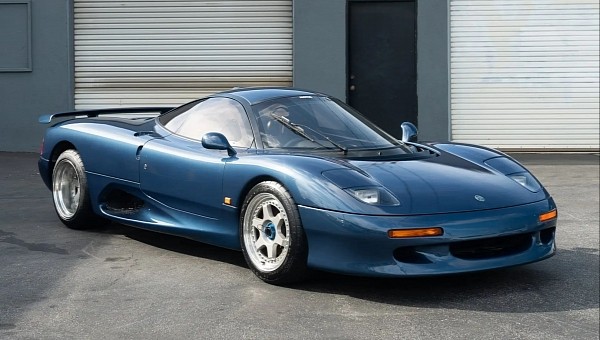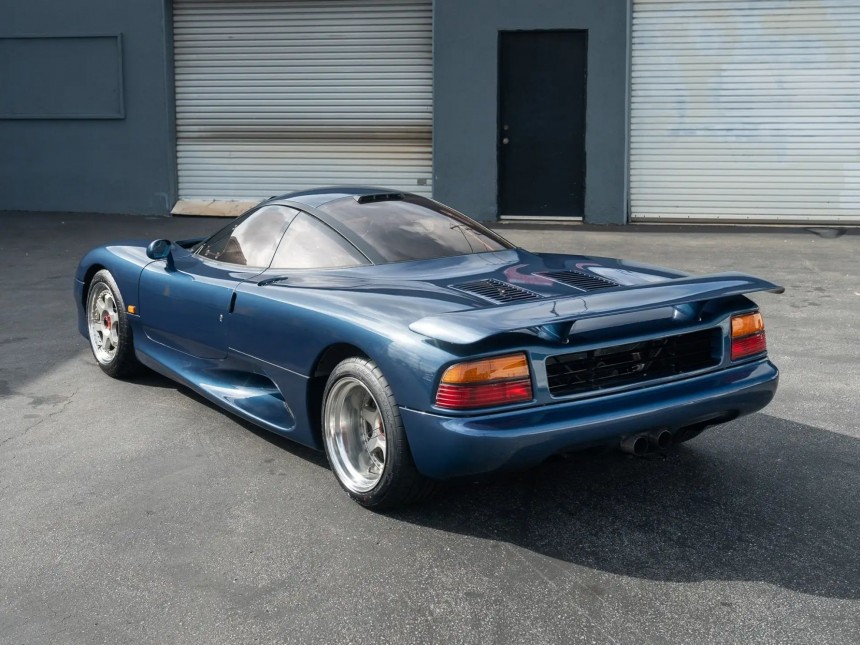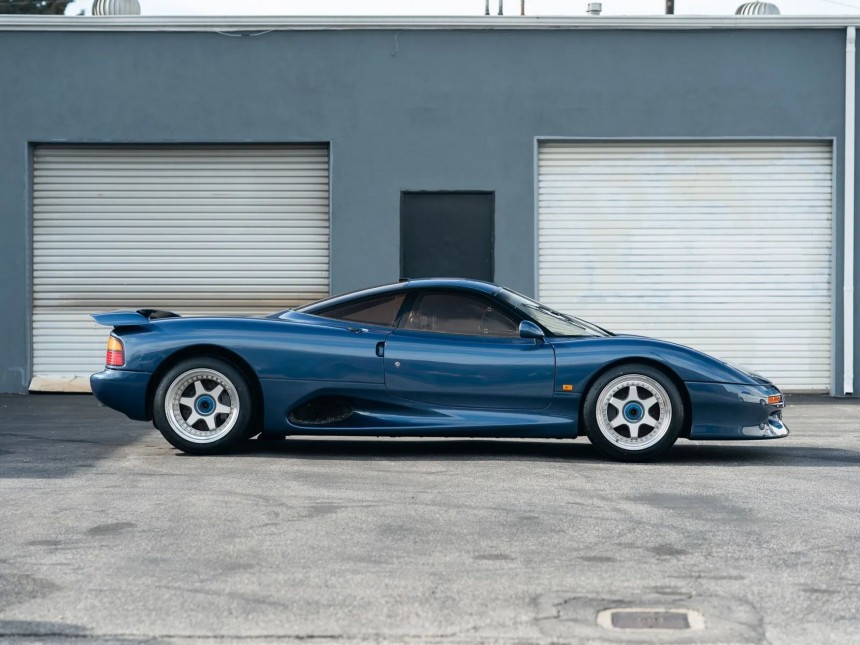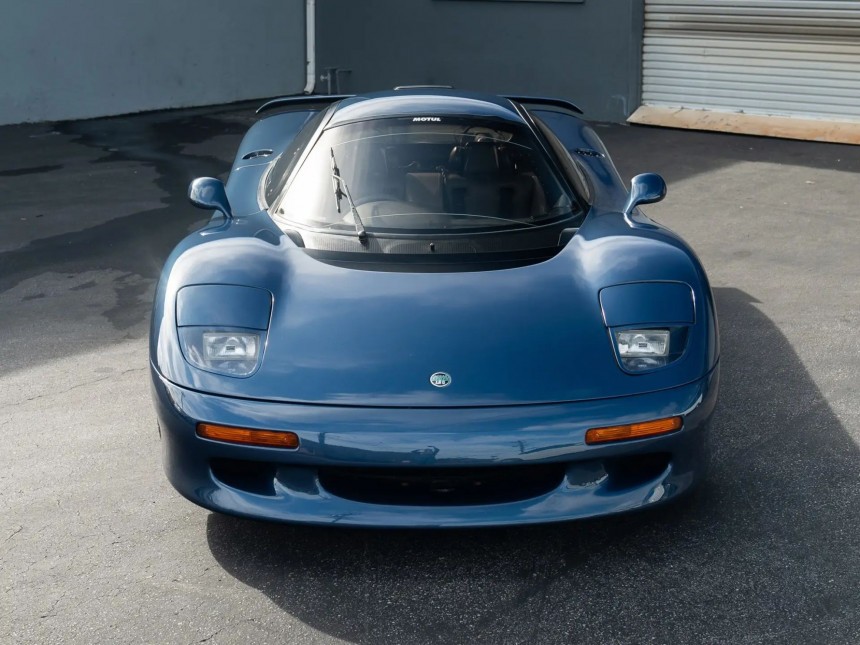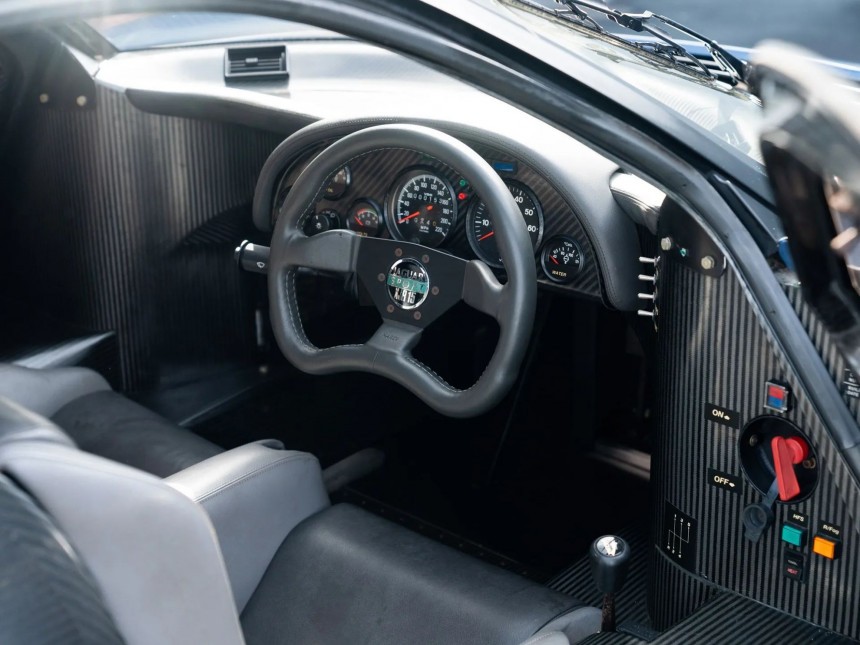Sometimes, a motorsports vehicle is so good that automakers end up creating a production road car inspired by the racing car's success. One example is the Jaguar XJR-15, the production version of the brand's world-beating Group C Sports-Prototype XJR-9. Today, I'd like to tell you more about this rare machine and even present you with an opportunity to get your hands on one.
One automaker that enjoyed significant success in endurance racing is Jaguar – the brand won the famed 24 Hours of Le Mans five times in the 1950s, of which three consecutive wins from 1955 to 1957.
However, the legendary D-Types were retired in 1957, and tragedy struck when several roadgoing XKSS conversions were burned in a fire later that year. The Coventry-based marque ended its streak the same year, and it seemed like the automaker was satisfied with what it had achieved.
For three decades, Jaguar didn't excel in the La Sarthe race. Things changed when John Edan took the reins as Jaguar chairman in 1980. Luckily for the company, he set his sights on bringing Jaguar to its former motorsport glory and established a partnership with TWR (Tom Walkinshaw Racing). The new force campaigned the Jaguar XJS in the European Touring Car Championship before officiating the collaboration in the form of JaguarSport in 1986. It didn't take long until results appeared, as the Group C Jaguar-TWR XJR-9 won at both Le Mans and Daytona in 1988 and 1990.
Walkinshaw saw more than just the potential to win races in the XJR-9 – he envisioned an exclusive roadgoing supercar with exceptional performance. And so, in November 1990, JaguarSport introduced the XJR-15, which would enjoy a limited production of 50 units. They would be built in the mold of the renowned D-Type and be equipped with race-bred technology.
The XJR-9 didn't just serve as an inspiration – Jaguar set out to create a literal "race car for the road," with the XJR-15 using the same design philosophy and the same technology as its parent. It was equipped with a heavily tuned 6.0-liter V12 engine, the same that helped Jaguar snatch a victory in the WSC (World Sports Cars). It could output 350 hp (261 kW or 355 ps), giving the XJR-15 an immense power-to-weight ratio, more than any of its supercar predecessors. Another similarity to the XJR-9 is that it was fitted with a race-spec set of four-piston AP Racing calipers mated to disc brakes housed in light alloy OZ wheels.
The supercar is genuinely groundbreaking. It's the first roadgoing car to use carbon fiber in the construction of its body and tub. Peter Stevens, the designer of the McLaren F1, penned the body. However, the XJR-15's comprehensive use of carbon fiber pre-dated the F1 by two years. Another comparison is that the XJR-15 is slimmer than McLaren's creation, tipping the scales at a factory-reported 2,315 lbs. (1.050 kg), making it 194 lbs. (88 kg) lighter than the already lightweight McLaren F1.
Similarities between the two English supercars don't stop there. Both share a rear-mid-mounted naturally aspirated V12 engine architecture, and both have won in Le Mans.
As you'd expect, the car cost a fortune, with a price of almost $1M when new. Production for the XJR-15 lasted until 1992, and it's reported that Jaguar built only 53 examples. Of those, 27 were road-specified, while the rest were destined for the track.
The XJR-15 I'd like to present today is quite remarkable – the chassis number 042 was delivered new to a collector in Asia in July 1991; he kept it hidden from the public as a static display within his collection. That's why its odometer reads an astonishingly low number of 153 miles (246 km).
Accompanying documentation shows that chassis 042 was purchased from TWR-JaguarSport Limited via the UK-based specialty auto exporter Wheels Abroad on January 14, 1991, for the price of £620,000 (~$1,182,000).
This example features a signature color combination for the XJR-15: Mauritius Blue Metallic over Savile Grey upholstery. The weave of the carbon body panels is identifiable in the paint, while the carbon fiber tub is proudly showcased below the windscreen. The car is fitted with its original three-piece OZ racing wheels.
The exterior's style continues into the interior, where you'll quickly notice the same carbon fiber theme on the dashboard, console, as well as other elements. Furthermore, you'll discover a five-speed synchromesh transaxle, standard on all road-specified XJR-15s, which is much more practical than the straight-cut, six-speed Hewland competition unit on the racing examples.
As soon as the owner got his hands on this XJR-15, he added it to his vast collection. Unfortunately, that's where it remained until 2022. No maintenance was done to the vehicle. It wasn't even moved, started, or publicly displayed. Due to this, it will require full mechanical recommissioning – to facilitate the process, the consignor has acquired several critical spares as a courtesy to the car's next custodian. Among those, there's an OEM fuel bladder and fuel pumps sourced from XJR-15 model specialists Don Law Racing. Moreover, the vehicle was gifted with new tires last month.
In late 2022, the original owner shipped it to the United States, and it will be auctioned on Amelia Island, Florida, on March 4. It's the perfect opportunity to acquire a piece of Jaguar history that boasts powerful capabilities and is a nod to the brand's motorsport heritage. However, even though this single-owner specimen boasts low mileage, the future owner must invest to make it mechanically pristine again.
However, the legendary D-Types were retired in 1957, and tragedy struck when several roadgoing XKSS conversions were burned in a fire later that year. The Coventry-based marque ended its streak the same year, and it seemed like the automaker was satisfied with what it had achieved.
For three decades, Jaguar didn't excel in the La Sarthe race. Things changed when John Edan took the reins as Jaguar chairman in 1980. Luckily for the company, he set his sights on bringing Jaguar to its former motorsport glory and established a partnership with TWR (Tom Walkinshaw Racing). The new force campaigned the Jaguar XJS in the European Touring Car Championship before officiating the collaboration in the form of JaguarSport in 1986. It didn't take long until results appeared, as the Group C Jaguar-TWR XJR-9 won at both Le Mans and Daytona in 1988 and 1990.
The XJR-9 didn't just serve as an inspiration – Jaguar set out to create a literal "race car for the road," with the XJR-15 using the same design philosophy and the same technology as its parent. It was equipped with a heavily tuned 6.0-liter V12 engine, the same that helped Jaguar snatch a victory in the WSC (World Sports Cars). It could output 350 hp (261 kW or 355 ps), giving the XJR-15 an immense power-to-weight ratio, more than any of its supercar predecessors. Another similarity to the XJR-9 is that it was fitted with a race-spec set of four-piston AP Racing calipers mated to disc brakes housed in light alloy OZ wheels.
The supercar is genuinely groundbreaking. It's the first roadgoing car to use carbon fiber in the construction of its body and tub. Peter Stevens, the designer of the McLaren F1, penned the body. However, the XJR-15's comprehensive use of carbon fiber pre-dated the F1 by two years. Another comparison is that the XJR-15 is slimmer than McLaren's creation, tipping the scales at a factory-reported 2,315 lbs. (1.050 kg), making it 194 lbs. (88 kg) lighter than the already lightweight McLaren F1.
As you'd expect, the car cost a fortune, with a price of almost $1M when new. Production for the XJR-15 lasted until 1992, and it's reported that Jaguar built only 53 examples. Of those, 27 were road-specified, while the rest were destined for the track.
The XJR-15 I'd like to present today is quite remarkable – the chassis number 042 was delivered new to a collector in Asia in July 1991; he kept it hidden from the public as a static display within his collection. That's why its odometer reads an astonishingly low number of 153 miles (246 km).
This example features a signature color combination for the XJR-15: Mauritius Blue Metallic over Savile Grey upholstery. The weave of the carbon body panels is identifiable in the paint, while the carbon fiber tub is proudly showcased below the windscreen. The car is fitted with its original three-piece OZ racing wheels.
The exterior's style continues into the interior, where you'll quickly notice the same carbon fiber theme on the dashboard, console, as well as other elements. Furthermore, you'll discover a five-speed synchromesh transaxle, standard on all road-specified XJR-15s, which is much more practical than the straight-cut, six-speed Hewland competition unit on the racing examples.
In late 2022, the original owner shipped it to the United States, and it will be auctioned on Amelia Island, Florida, on March 4. It's the perfect opportunity to acquire a piece of Jaguar history that boasts powerful capabilities and is a nod to the brand's motorsport heritage. However, even though this single-owner specimen boasts low mileage, the future owner must invest to make it mechanically pristine again.
